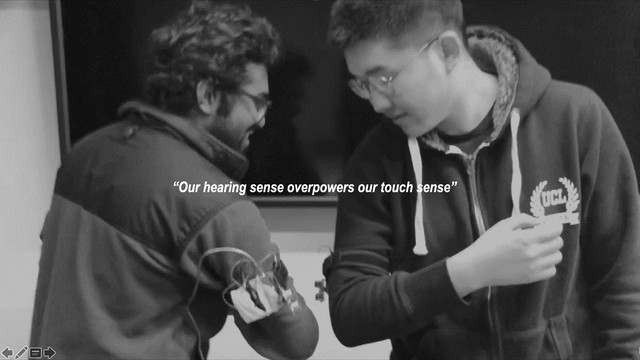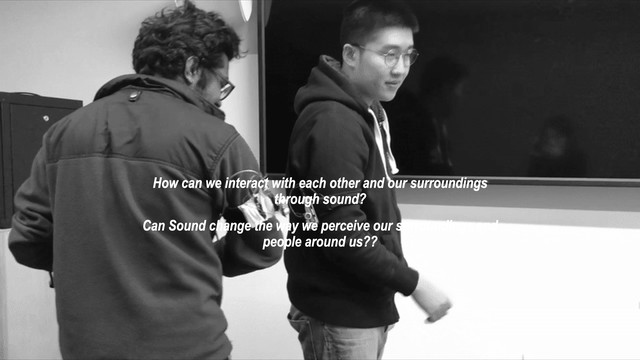The Sound of our Bubbles 2019, United Kingdom, London
How we perceive our bodies and social distancing through 'sound'





How can we detect other’s interference with our “Bubble” – Interpersonal Space and Social Distance.? Through iterative prototyping that supports playful interventions, this project explores interacting and perceiving our surroundings and people around us through sound. It explores how our perception of sound is connected through our embodied interaction with the world. The project investigates how we can become more aware of out bodies and our surroundings through the use of dynamic sound that can help us sense our surroundings and the presence of people around us.
This project, explores personal space and the notion of proxemics, ie the space between people. Playful interventions are developed and tested through an iterative prototyping process using dynamic sonic environment. The project was originally developed in 2019, however, the investigation is highly relevant to the current attempts to bring to our attention to the presence of other people around us, and encourage maintaining social and spatial distance to other people around us. The prototype was tested in various contexts: the underground, the school and the street. Initial test indicated that the use of sound made people more aware of the presence of other people and other object around them.
Details
Team members : Sarah Kabli
Supervisor : supervisor: Associate Professor: Ava Fatah gen Schieck
Institution : Bartlett School of Architecture, University college London
Descriptions
Technical Concept : A wearable device detects its surroundings through ultrasonic sensors. Input: Ultrasonic Sensor The speed of sound and the time difference are used as an input to determine the distance to an object using the following mathematical equation: Distance = Time x Speed of Sound divided by 2 Output: 3W Speaker Different sound frequencies will be produced (tones change in pitch and timing) depending on the distance between the sensor and other objects or people around them.
Visual Concept : The projects explores 'invisible' sensory sonic environments with various sound frequencies.
Credits
Sarah Kabli
Sarah Kabli
Sarah Kabli
Sarah Kabli
Sarah Kabli